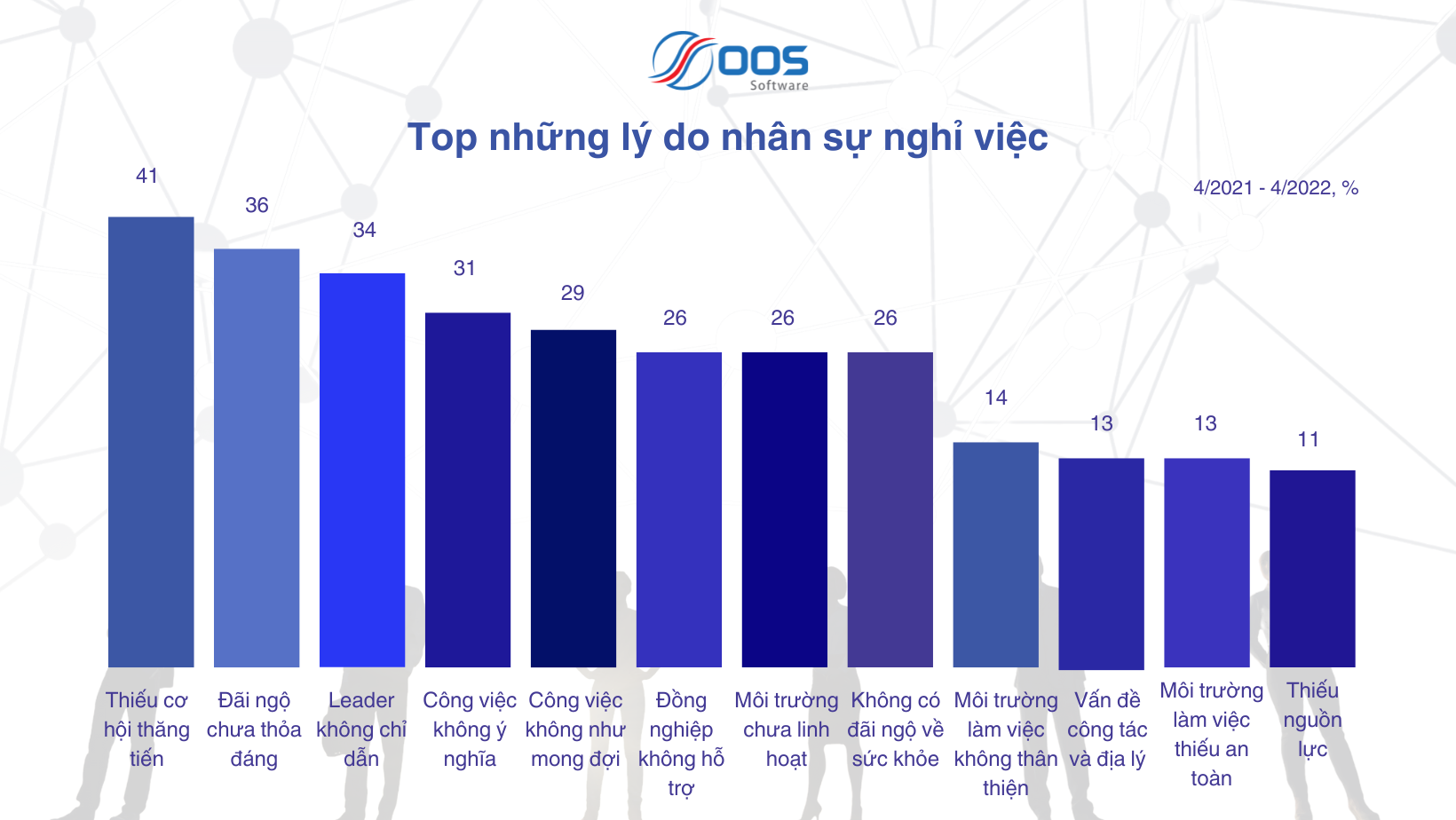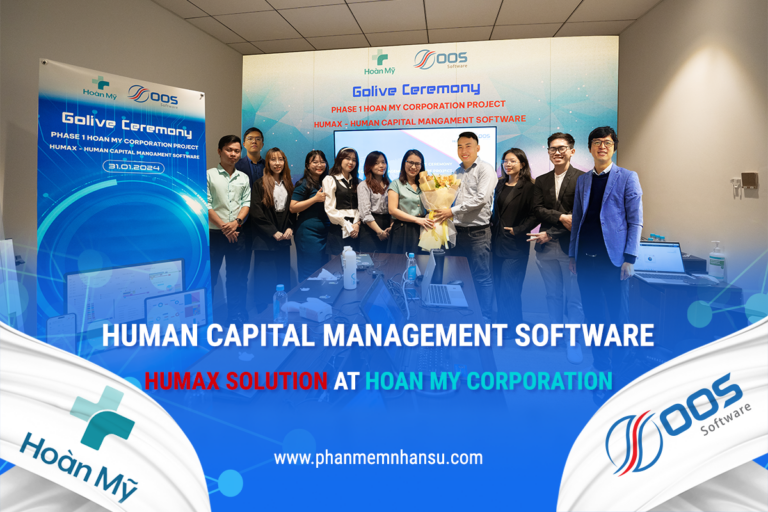There are several ways to distinguish a great workplace from a good workplace.
One of the easiest ways to tell is when an organization is investing in the development of their people. Investing in appropriate HR development will help employees feel more appreciated, have a clearer career development path, and above all, employees will be more likely to stick with the business. longer.
What is human resources development?
Personnel development is the totality of organized training activities conducted over a certain period of time to create a change in the professional capacity of workers in a positive direction. From there, improve labor quality and production and business efficiency for businesses.
Personnel development includes three main types of activities: education, training and development.
- Education: is the preparation of basic and necessary knowledge for human resources to participate in the labor market in the future. This is a step to build thinking, a core element in the human resource development process.
- Training: is understood as activities that help employees perform their functions and tasks more effectively. That is the process of helping workers master their profession, improve their qualifications and skills to perform tasks more effectively. Training activities are aimed at practical application to the job. Therefore, it is highly specialized. Each career will have separate training activities.
- Development: are activities that go beyond the scope of the employee's work, aiming to develop human resources based on the future orientation of the organization. This is a combination of education and training, long-term. This process not only affects workers and businesses but also has a strong impact on the development of society.
See more: Optimize training costs and time to develop employee capacity
26 statistics on human resource development in 2023
Here are some statistics that will convince you of the power of HR development, through the 2023 survey results.
One of the most important aspects of human resource development is training. Here are some important statistics that can help your business:
-
The cost of replacing a well-trained employee is up to 200% of their annual salary.
If your organization has invested heavily in developing its people, it will lose a lot when employees leave you. Depending on the industry and location of the business, the cost of replacing a trained employee will range from 33% to 213% of their annual salary.
-
Providing online learning training opportunities helps increase employee retention rate to 60%
There are many methods your business can use for training. Providing online, electronic learning opportunities (such as courses, webinars, e-books, etc.) will increase retention rates by up to 60%. Online HR training can help HR review learning materials easily.
-
59% employees said they are self-taught, and there are no training programs at the enterprise.
According to one study, 59% employees surveyed said they learned the skills they needed to do their jobs while on the job. In other words, they do not receive formal training at the enterprise.
-
34% employees are satisfied with the professional training program at the enterprise
Only about 1/3 of employees are satisfied with the training program associated with their daily work.
-
For every three employees interviewed, 1 complained that their company's current training process was outdated.
One in three employees say their company's training process is outdated.
For each employee to be able to take on a leadership or management position later on, their skills need to be nurtured.
Companies should not only aim to develop employees' skills to better fulfill their roles, but also help them become leaders in their departments and within the company.
-
60% Millennials surveyed said they wanted leadership training
Millennials now make up the majority of the active workforce, and this will continue to be the case in the coming years. They are the generation that wants to be trained for future leadership roles.
-
42% important role in the business is promoted by personnel.
According to a study, only 42% of the company's total critical roles can be filled by internal company personnel. In other words, very few companies plan ahead and consider internal promotions and when the time comes, they are forced to use resources and recruit personnel from outside the business.
-
83% businesses believe it is important to promote leadership at all levels
There's a pretty big difference between what companies want and what they actually do. Although many companies agree that promoting leadership is important, few do it.
-
48% managers want to be trained by external coaches and through development assignments
When leaders go through training, they want it to be organized and assigned through tasks. Furthermore, training should be done externally.
-
39% leaders prefer in-person formal training
For those already in leadership positions, in-person training is better than online or through courses.
Before investing heavily in HR development initiatives, it's important to know what employees think about workplace development. The good news is that the response has been overwhelmingly positive.
-
Lack of staff development and career advancement (41%) is the #1 reason why employees leave their jobs between April 2021 and April 2022
This reason is ranked No. 1 ahead of Inadequate Comprehensive Compensation (36%) and Uncaring and Uninspiring Leaders (34%)

.
-
94% employees will stay at a company longer if the company offers learning and development opportunities
One of the best ways to increase employee satisfaction and engagement is to consistently provide them with growth opportunities. Furthermore, this will have a significant impact on your turnover rate.
-
34% employees left their previous positions because there were no career development opportunities
Want to find out why your employees leave you? Chances are you're not giving them enough opportunities to hone their skills.
-
58% employees like to learn at their own pace
Formal training such as courses can make a big difference in educating your employees. However, the majority of employees prefer to learn through electronic materials that allow them to set their own learning pace and pace.
-
68% employees enjoy learning at work
One of the best ways to provide effective learning and development opportunities for your employees is to ensure they get them on the job. Outside sources are fine, but learning on the job is what makes the difference.
-
70% employees will leave their current company to invest in training and human resource development
If you're looking to stay competitive, it's best to start investing in HR training programs now and show everyone that this is an important part of your employer branding strategy. your application.
Onboarding is one of the key elements of great HR development. The first few weeks and months are crucial for proper retention and engagement. Below are some findings related to referrals.
-
The average new employee onboarding process (Onboarding) includes 54 different activities
Learning should be fun, especially for new employees who need to absorb new information. This involves going through a series of processes that are neither enjoyable nor geared toward learning. For better HR development, simplify your onboarding process with CoffeeHR HR management tool.
-
88% the company does not have a good integration process
According to the survey results - the vast majority of companies have a poor integration process. Since new employees are more likely to leave in those first few weeks and months, investing time and money in proper employee training can pay dividends later. Provide employees with multiple opportunities to learn formally and from their managers to improve organizational integration and reduce turnover.
-
87% companies believe that assigning a mentor during the onboarding process will increase the effectiveness of new hires
One of the best ways to learn is with a mentor or friend. If the organization wants to maximize the effectiveness of its people development during the induction phase, assign those new to the business with a mentor or a buddy who can work directly with them.
-
Companies with formal onboarding training are less likely to lose their workforce in the coming years
According to one study, companies with formal onboarding training programs are 60% less likely to lose employees in the next four years. In layman's terms, make your onboarding training program structured and mature and you will set your employees up for success – retaining them for years to come.
-
69% employees will stay with the company for more than 3 years if provided with a great onboarding experience
Investing a little more time and resources at the beginning will pay off big later. Making the onboarding experience more structured and higher quality will ensure better retention rates even after three years.
Retaining good employees is the goal of every organization. Besides providing them with the right salary and benefits, having the right HR development initiative will also have a great impact on an organization's employee retention.
-
Employees who feel they are progressing in their careers are more likely to stay with the company long-term 20%
According to one study, if an employee feels they are making progress within the company, their likelihood of staying with the business increases significantly.
-
70% employees say they will be forced to leave their current company to advance their careers
When employees cannot find growth opportunities within their organization, they are forced to look outside. To retain your top talent (and especially those groups that are likely to leave), make sure to have a formal HR development program in place.
-
93% employees are willing to stay with the company if the company invests in their career
Look at the big picture instead of thinking small. Companies that invest in their employees' careers are more likely to retain those people over the long term. A study shows that more than 70% employees would leave their current job to work for a company that wants to invest in their long-term career.
-
Better employee engagement = better employee retention
It's no surprise that the more engaged employees are, the less likely they are to leave the company. According to one study, engaged employees are 87% less likely to leave their current company than disengaged employees.

-
Without proper management skills, employees are four times more likely to quit their jobs
Here's a slightly different perspective: businesses need to develop their managers' skills as much as they need to hone their employees' skill sets. If an organization's executive leadership lacks the right skills, everyone down the chain of command will suffer and they will be more likely to leave.
If an organization does not invest in human resource development, it is already falling behind.
Ending
Businesses are always looking for ways to increase revenue and reduce costs for business activities, one of which is training and developing employee capacity, because this is a significant investment for businesses. . Using OOS as a human resources management system will experience the benefits of an optimal training platform. That's why OOS is a modern LMS with powerful features and solutions for optimizing training costs and time, and developing capacity for your employees.
OOS Software has more than 10 years of accompanying many businesses and corporations. Contact now to Get Human Resources Software consulting for your Business.























